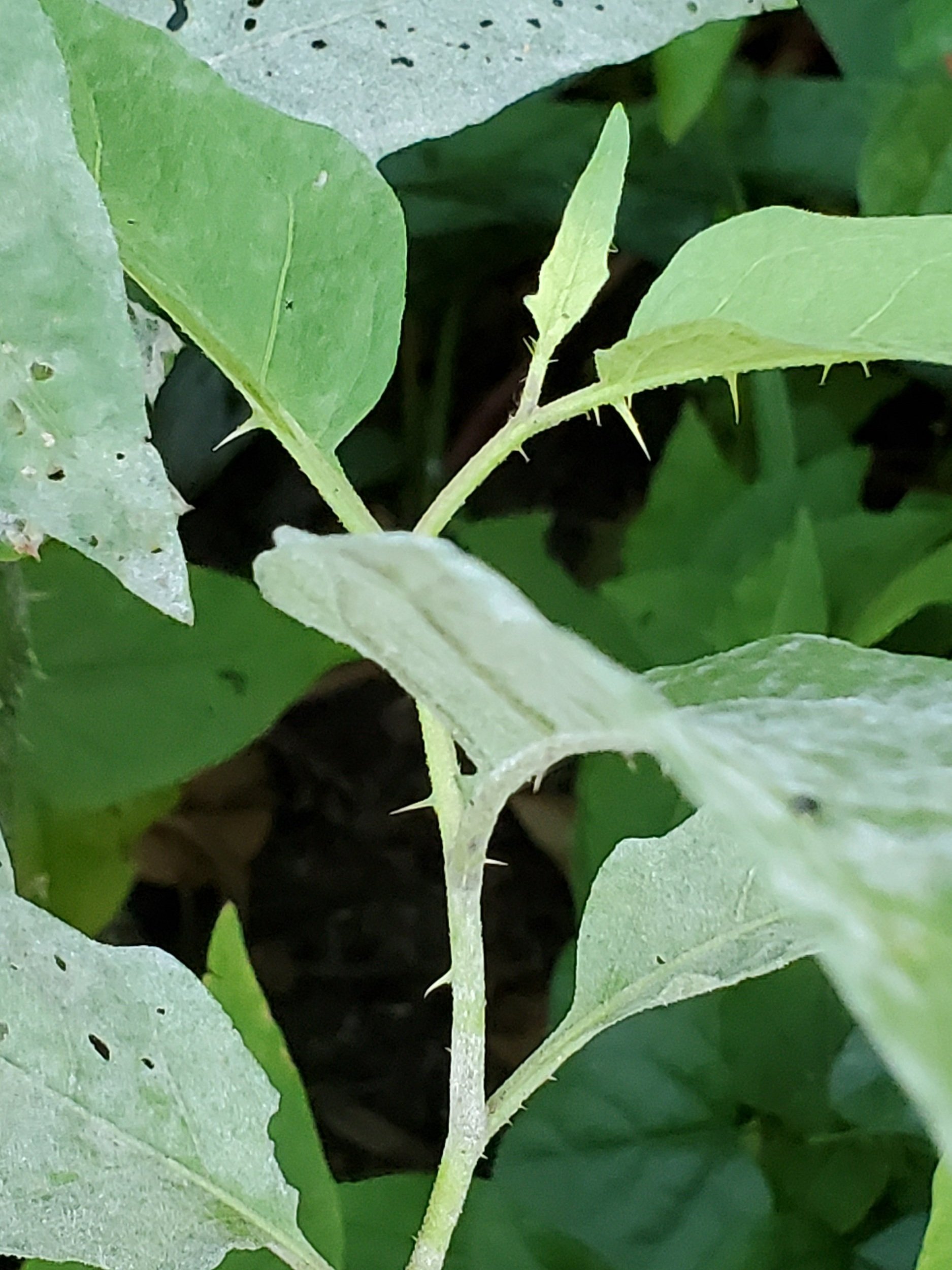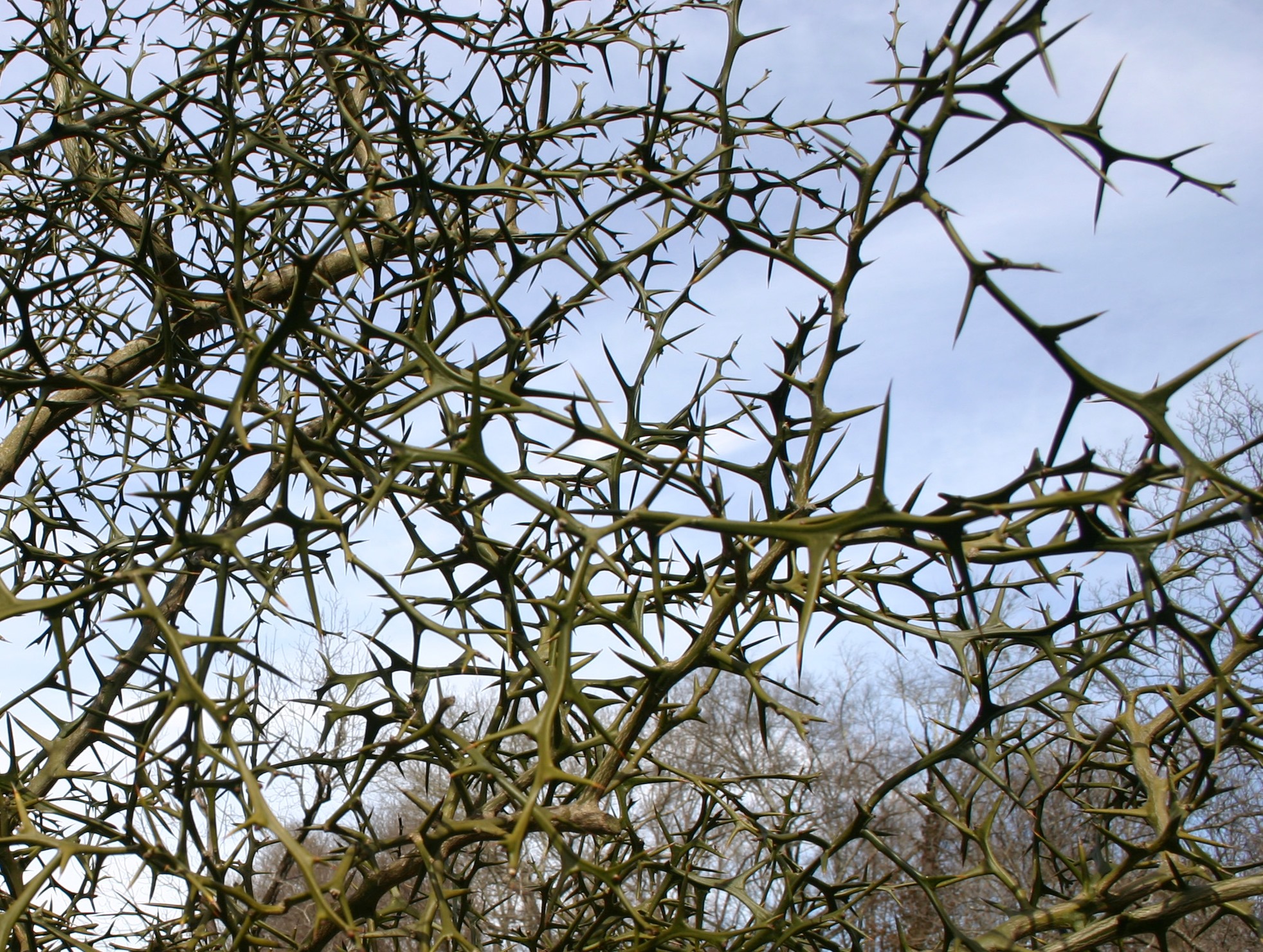It is time for another weed rant. Horse nettle, Solanum carolinense (pronounced so-LAN-num kair-oh-lin-EN-say), is number two on my list of Weeds From Hades. (Number one is mulberryweed. Click HERE to review A Terrible, Horrible, No Good Weed.) Horse nettle has two, and only two, positive attributes. It is southeastern native, and bumblebees love the pale lavender flowers. If I was feeling generous toward this plant demon (I’m not), I could add that wild turkey, quail and a few songbirds enjoy the berries. The berries and all other parts of the plant are seriously toxic to humans, pets, and livestock.
Horse nettle is found in more than half of the USA. It is a tap-rooted perennial that will grow in any type of soil and any pH. It grows along sunny roadsides, in open fields, and in cultivated gardens. I thought that tilling the soil in my orchard would vanquish this foe, but instead the tilling process broke the root and its fleshy rhizomes into pieces, all of which returned with a vengeance. I do not use herbicides in areas where food is grown, so the only method of removal is digging and pulling. The razor-sharp prickles penetrate thin garden gloves, so I have added a pair of cheap pliers to my bucket of garden tools. I grasp the base of the plant with the pliers and lift gently, while using a tool in the other hand to loosen and lift the rhizomes that radiate off the tap root. It is a slow process, better done after a rain has softened the soil. [Side note: Prickles are modified plant hairs, spines are modified leaves, and thorns are modified stems. Roses have prickles, not thorns. Best not to mention this to poetry-writing friends.] Even if the prickles do not stab you, the star-shaped hairs cause misery when they brush against an unprotected ankle.
Young horse nettle leaves resemble tomato. Stems zig-zag and become woody with age. Plants may be 30 inches or more in height, but tend to sprawl rather than growing upright. They flower from spring all the way into fall. The fruits are round green marbles containing several seeds each. In late fall, the green fruits turn yellow and can be mistaken for a tiny tomato. Fully ripe berries wrinkle a bit. If you have children or grandchildren, please educate them about this plant. Ripe, yellow fruits are even more toxic than the green ones. Consuming them can lead to coma or death. Not only does horse nettle stab the careless gardener, it also plays host to tobacco hornworms and Colorado potato beetles.
If herbicide is your chosen method for eradication, check the label to be certain it is listed. Horse nettle is resistant to some herbicides (2,4D for instance) and repeated mowing has no effect.
Other common names for horse nettle include bull nettle, devil’s tomato, or apple of Sodom. The name of those in the Mary Snoddy garden is not fit for print.




